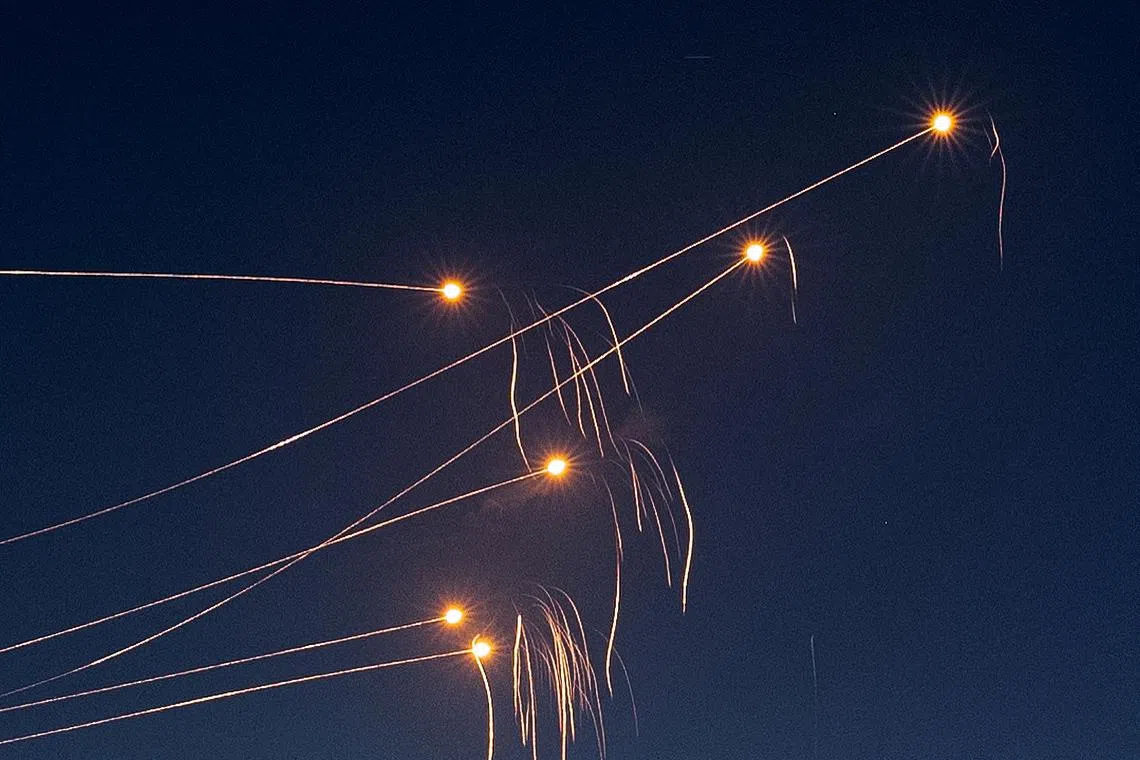What are Israel's Iron Dome and Arrow missile defences?
Sign up now: Get ST's newsletters delivered to your inbox

Israel's Iron Dome anti-missile system intercepting rockets launched from the Gaza Strip, in December 2023.
PHOTO: REUTERS
Follow topic:
TEL AVIV - Israel used a multi-layered defence shield to block Iran's mass drone and missile attack
Israel has been honing its air defences since coming under Iraqi Scud salvoes in the 1991 Gulf war.
Arrow
The long-range Arrow-2 and Arrow-3 system, developed by Israel with an Iranian missile threat in mind, is designed to intercept ballistic missiles outside the earth's atmosphere, using a detachable warhead that collides with the target.
It operates at an altitude that allows for the safe dispersal of any non-conventional warheads.
State-owned Israel Aerospace Industries is the project's main contractor, while Boeing is involved in producing the interceptors.
On Oct 31, Israel's military said it had used the Arrow aerial defence system for the first time since the Oct 7 outbreak of the war with Hamas
On Sept 28, Germany signed a letter of commitment with Israel to buy the Arrow-3 missile defence system for nearly €4 billion (S$5.4 billion).
David’s Sling
The mid-range David's Sling system is designed to shoot down ballistic missiles fired from 100km to 200km away.
Developed and manufactured jointly by Israel’s state-owned Rafael Advanced Defense Systems and the US Raytheon company, David’s Sling is also designed to intercept aircraft, drones and cruise missiles.
Iron Dome
The short-range Iron Dome air defence system was built to intercept the kind of rockets fired by the Palestinian Islamist movement Hamas in Gaza.
Developed by state-owned Rafael Advanced Defence Systems with US backing, it became operational in 2011. Each truck-towed unit fires radar-guided missiles to blow up short-range threats like rockets, mortars and drones in mid-air.
Rafael says it delivered two Iron Dome batteries to the US Army in 2020. Ukraine is seeking a supply as well in its war with Russia, though Israel has so far only provided Kyiv with humanitarian support and civil defences.
A naval version of the Iron Dome to protect ships and sea-based assets was deployed in 2017.
The system quickly determines whether a rocket is on course to hit a populated area; if not, the rocket is ignored and allowed to land harmlessly.
Iron Dome was originally billed as providing city-sized coverage against rockets with ranges of between 4km and 70km, but experts say this has since been expanded.
Laser-based system
Israel's interception systems cost between tens of thousands and millions of dollars to shoot down incoming threats.
Israel is developing a laser-based system to neutralise enemy rockets and drones at an estimated cost of just US$2 per interception. REUTERS

